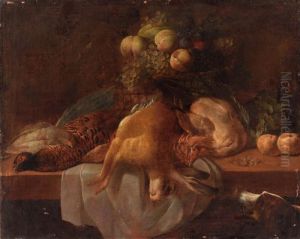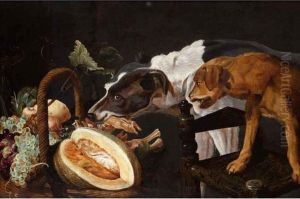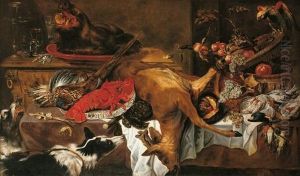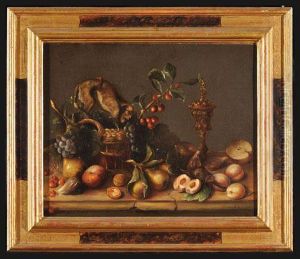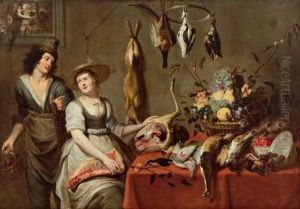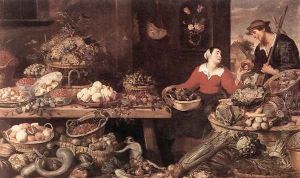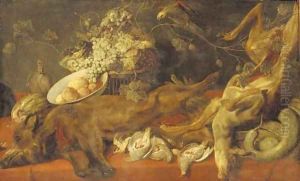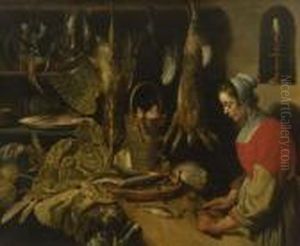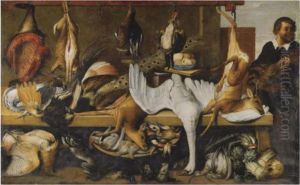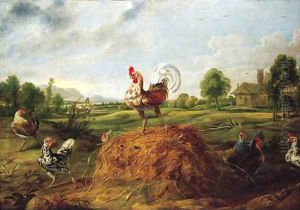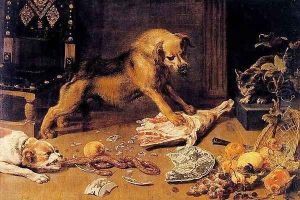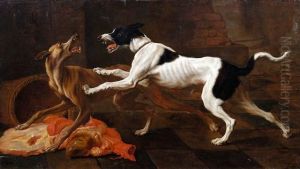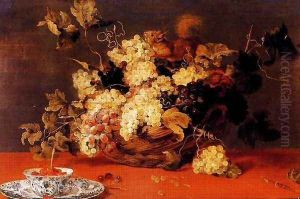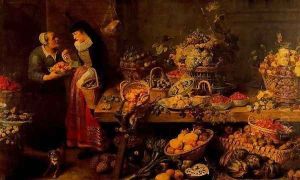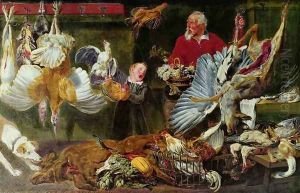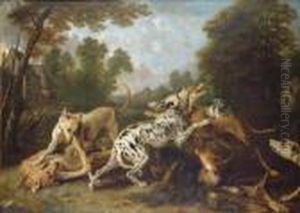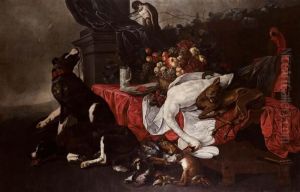





Natura Morta Con Frutta, Selvaggina, Due Cani, Pappagallo E Scimmia
-
About Reproduction
Discover the allure of art with our faithful reproduction of "Natura Morta Con Frutta, Selvaggina, Due Cani, Pappagallo E Scimmia", originally brought to life by the talented Frans Snyders. Unlike posters or prints, our hand-painted oil painting breathes an unique sense of depth and texture into your space. Every detail, every stroke, and every texture is meticulously recreated, paying the perfect homage to Frans Snyders and his artistic vision.
Owning this piece is more than just decoration - it's a statement of your refined taste in art. Let the vibrant colors and intricate details of this replica serve as a daily reminder of the beauty in our world. Elevate your decor and appreciate the richness of art with our replica of this masterpiece.
-
Painting Description
"Natura Morta Con Frutta, Selvaggina, Due Cani, Pappagallo E Scimmia" is a significant still life painting by Frans Snyders, a prominent Flemish painter known for his mastery in depicting animals, hunting scenes, and elaborate still lifes. This work, whose title translates to "Still Life with Fruit, Game, Two Dogs, a Parrot, and a Monkey" in English, showcases Snyders' exceptional skill in rendering textures, colors, and the vitality of a diverse array of subjects within a single composition. Created during the early 17th century, a period marked by a flourishing interest in still life as a genre in European art, this painting exemplifies the Baroque era's fascination with detailed, dynamic representations of nature and domestic abundance.
Frans Snyders, born in Antwerp in 1579, was a contemporary and collaborator of Peter Paul Rubens, and his works often reflect the Baroque style's emphasis on richness, contrast, and movement. "Natura Morta Con Frutta, Selvaggina, Due Cani, Pappagallo E Scimmia" is particularly noted for its vivid portrayal of a lavish spread that includes an array of fruits, game animals, and exotic pets, which were symbols of wealth and status during the 17th century. The painting not only displays Snyders' technical prowess but also serves as a reflection of the period's social and cultural attitudes towards nature, exploration, and the accumulation of wealth.
The composition is dynamic, with each element carefully placed to lead the viewer's eye across the canvas, creating a sense of abundance and opulence. The realism and attention to detail in the depiction of textures—from the softness of the animals' fur to the smoothness of the fruit and the intricate feathers of the parrot—demonstrate Snyders' mastery of his medium. Furthermore, the inclusion of a monkey and a parrot, exotic animals not native to Europe, underscores the era's growing interest in exploration and the natural world.
"Natura Morta Con Frutta, Selvaggina, Due Cani, Pappagallo E Scimmia" remains a testament to Frans Snyders' enduring legacy as one of the foremost still life painters of the Baroque period. His work continues to be celebrated for its intricate detail, compositional complexity, and the vividness with which it captures the natural and the opulent. This painting, like many of Snyders' works, offers insight into the artistic, cultural, and social preoccupations of 17th-century Europe, making it a valuable piece for both art historians and enthusiasts alike.
-
Lead Time & Shipping
When you order this oil painting replica, it typically takes 2-3 weeks to paint. If the artwork is more complex, it might need a little more time to ensure the best quality. Once it's ready, we'll send you a photo for your approval. After you give the green light, we'll ship it to you for free.
-
Return & Refund
We believe in the quality of our hand-painted oil painting reproductions, and your satisfaction is our priority. If for any reason, you are not completely satisfied with your purchase, we offer a 45-day return policy. You can return your artwork within 45 days of receipt and receive a full refund. Please note that the artwork must be returned in the original packaging and in the same condition as it was received.





